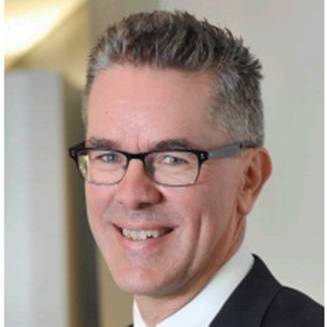Gary McLaren / Bob James discussion: The NBN today ? back on track, or could a new path emerge?
Tuesday, 28th October 2014
This month's TelSoc lunchtime lecture follows the TelSoc Annual General Meeting. It includes Gary McLaren and Bob James discussing the status of NBN today. Is it back on track, or could a yet another path emerge?
The 3 major reviews of the NBN have now been delivered and provide much to discuss:
- A palette of technology choices
- Anticipation of greater disruption by both fixed and mobile alternatives
- Quantification of speed demand for first time
- Encouragement of greater rather than less competition
- Suggestions to reduce uniformity ? particularly in pricing
So will the NBN be completed much as previously planned but with just a few more technologies in urban areas? Or will we see substantial change ? more competition, more disruption and less uniformity. And overall, would change be good or bad for consumers and the industry?
This special session will commence at 11.45am with the TelSoc Annual General Meeting 2014 including some special resolutions and election of the Board for the following year. Board nomination forms, nominations to date and proxy forms are all available on the website menu under "My account" when you are logged in as a financial member (including life members and student members).
Event details:
- 11.45am to 12.15pm - TelSoc AGM
- 12.30 to 1.30pm - Gary McLaren / Bob James discussion
AFTER the conclusion of Gary and Bob's presentation at 1.30pm, there will be an opportunity for you to network with your industry colleagues over tea and coffee until 2.00pm.
Date and Time
Tue, 28 Oct 2014
11:45 - 14:00 AEDT
Location
Presenter(s)

Gary McLaren has over 25 years experience in the telecommunications industry. After senior roles at both Telstra and Siemens in the 1990s, Gary joined RequestDSL, Australia?s first DSL unbundled local loop carrier in 2000. In 2004, RequestDSL was merged with PowerTel by their common venture capital owner Telecom Venture Group. From 2005 to 2007, Gary provided management consulting services to AAPT and developed a startup business within AAPT called IProvide which focused on building AAPT?s SME business. In parallel, Gary also held executive director roles with Utiba, a mobile payments startup focused on the South East Asian market. Utiba was sold to Amdocs in 2013 for approximately $US25 million.
In 2009, Gary was appointed Chief Technology Officer of NBN Co and was responsible for developing and implementing the network architecture, design and integration of the NBN. He was directly involved in the negotiations of the industry restructuring deal between NBN Co and Telstra and responsible for NBN Co?s network technology procurement worth over $A7 billion.Gary left NBN Co in mid-2014 and is now re-connecting with the Australian startup tech sector as both an angel investor and experienced mentor/executive to assist the growth of Australia?s enterprenurial ICT sector.
Gary has degrees from Melbourne University in Engineering and Law.

Bob James was Group General Manager, Strategic Development and Director of Product Technology among many other titles in the almost 30 years that he spent with Telstra. He has consulted in Australia and overseas since leaving Telstra in 2001. Key areas of expertise include fixed and mobile broadband, mobile devices and cloud services. The development of the NBN has been a consistent theme in recent engagements.

Comments
Questions for the next issue of AJTDE
Graham Shepherd - 03/11/2014 at 20:35
This was an outstanding panel session which drew a full house and lots of engagement from the audience. I understand that Gary and Bob have both agreed to develop the themes they raised in this panel session in the forthcoming December issue of the Australian Journal of Telecommunications and the Digital Economy (http://telsoc.org/journal).It appears to me that there were two major controversial points made, one by each of Gary and Bob. Both points were challenged strongly by members of the audience. The first by Gary being that, in the absence of any surety of continuing government investment to keep the NBN infrastructure up-to-date, there needs to be commercial competition at the infrastructure level. The argument from the floor was that competition will focus on the most profitable areas, that rural areas will suffer and that it will create high priced commercial oligopolies.The second point by Bob was his opinion, similar to that expressed by Rob Kenny of Communications Chambers, that demand for speed is going to flatten out because most of the bandwidth problems have been ironed out, eg, music, images and videos are well compressed, that more compression is on the way and that you can only view so much at once. The argument from the floor was that the demand for increasing resolution doesn't seem to be declining, eg, 4K and 8K 3D videos; that applications are growing in number, eg, cloud backup at full res, gaming, imaging and other sensors in every home, farm, device - big data in every way. (One specific example is that the standard image format for archiving is uncompressed TIFF and that the open data initiatives of government are making this freely downloadable, ie, tens/hundreds of thousands of single image files of 100MB plus.)In their AJTDE articles I would like to see Gary and Bob address these points with specific solutions in Gary's case and specific data in Bob's case. Or: a revision of their thoughts taking into account the points raised in the discussion.